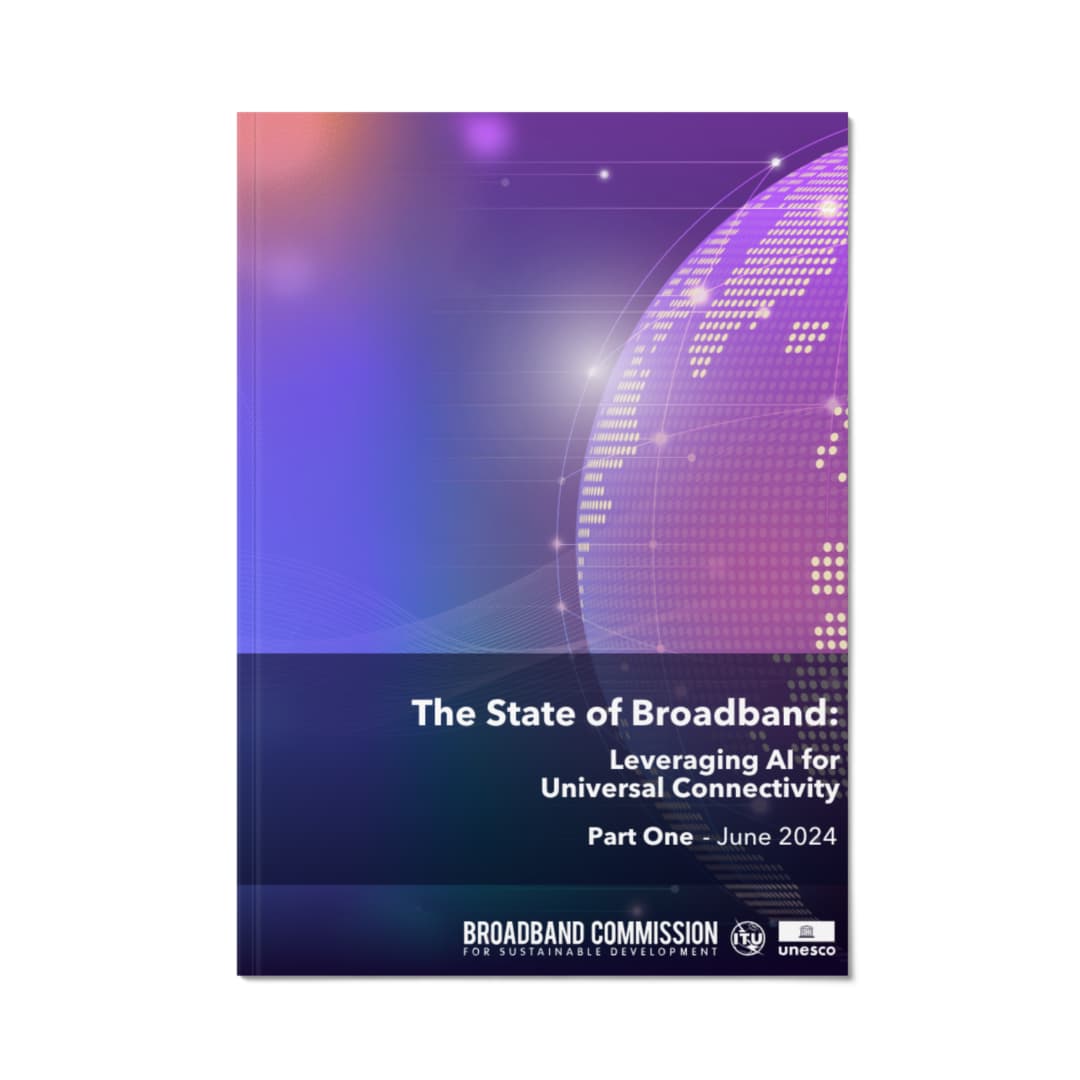Achieving the 2025 Advocacy Targets
What are the 2025 Broadband Advocacy Targets?
The seven Advocacy Targets of the Broadband Commission reflect ambitious and aspirational goals and function as a policy and programmatic guide for national and international action in broadband development and for achieving universal connectivity. Starting initially with four connectivity goals established in 2011, the Targets were expanded to five in 2013, with the addition of the gender equality goal, and eventually to seven in 2018.
How is progress tracked?
The Commission tracks progress on the Targets in its annual flagship State of Broadband Reports. Utilizing a variety of data sources, progress is estimated on these goals and multistakeholder policy recommendations are developed to suggest how to achieve them. The Commission’s Working Groups also address themes related to these targets to provide more in-depth analysis and detailed recommendations for all stakeholders. The Targets map directly onto the UN Secretary-General’s Digital Cooperation Roadmap areas of actions.
MAKE BROADBAND POLICY UNIVERSAL
By 2025, all countries should have a funded National Broadband Plan (NBP) or strategy, or include broadband in their Universal Access and Service (UAS) Definition
155 countries had a national broadband plan or other digital strategic document emphasizing broadband in 2022, down from 165 in 2021. The number of economies with a broadband plan has slightly decreased, as plans have expired and haven’t been renewed in some countries. While a plan is a useful starting point, it is important to know how well they are operationalized.
MAKE BROADBAND AFFORDABLE
By 2025, entry-level broadband services should be made affordable in low- and middle-income countries at less than 2% of monthly Gross National Income (GNI) per capita
According to the ITU’s 2023 Facts and Figures report, where data are available 114 economies out of 188 meet the affordability target for the data-only mobile-broadband basket in 2023, 11 more than in 2022. Seventy-one economies out of 178 meet the target concerning the fixed-broadband basket, the same number as in 2022. Sixty-two of the low- and middle-income economies meet the Broadband Commission affordability target in 2023, with either one of the two baskets. With the majority of the 134 low- and middle-income economies still above it, reaching the target remains a challenge.
GET EVERYONE ONLINE
By 2025, broadband-Internet user penetration should reach: i) 75% worldwide; ii) 65% in low- and middle-income countries; and iii) 35% in least developed countries
ITU 2023 data find that approximately 67% of the world’s population, or 5.4 billion people, is now online. This represents a growth of 4.7% since 2022, an increase from the 3.5% recorded from 2021 to 2022. The number of people offline in 2023 decreased to an estimated 2.6 billion people, representing 33% of the global population.
PROMOTE DIGITAL SKILLS DEVELOPMENT
By 2025, 60% of youth and adults should have achieved at least a minimum level of proficiency in sustainable digital skills
Digital literacy is one of the main causes of digital exclusion and often among the top answers when people are surveyed about why they do not use the Internet. According to the latest available data from the ITU, the relatively low level of skills in countries providing data contrasts against their high share of overall Internet use – 87%. This gap between individuals using the Internet and those with digital skills demonstrates that many may be using the Internet without being able to fully benefit from it or avoid its dangers. Challenges persist with regards to the data availability and interpretation of this indicator, which limit interpretations about global digital literacy.
INCREASE USE OF E-FINANCE
By 2025, 40% of the world’s population should be using digital financial services
Digital financial services present a tremendous opportunity to swiftly increase the number of people using the Internet and extend access to the social and economic benefits of digital resources. According to the latest data from the World Bank’s FINDEX survey, 64% of people aged 15 years and older made and/or received digital payments in 2021. This figure exceeds the target of 40% on a global basis. While low and lower middle-income countries and South Asia have not yet reached the target, they are on track to achieve it by 2025.
GET MSMEs ONLINE
By 2025, improve connectivity of micro-, small- and medium sized enterprises (MSMEs) by 50%, by sector
Connectivity data disaggregated by enterprise size is widely available for high-income nations, although not always for micro-enterprises. For most low- and middle-income countries, even aggregated data on total enterprises with Internet access is not available, let alone by sector. Hence it is difficult to gauge the severity of the problem. The nature of the connectivity is also important. A one-person micro enterprise might find having a smartphone with wireless access sufficient to carry out operations, particularly for social media based online selling.
BRIDGE THE GENDER DIGITAL DIVIDE
By 2025, gender equality should be achieved across all targets
According to the latest ITU estimates, 70% of all men were using the Internet in 2023 compared to 65%of women. Gender parity increased from 0.90 in 2019 to 0.92 in 2023. Some regions and income groups have achieved gender parity in Internet usage, including some among high-income countries, SIDS, Latin America and the Caribbeans, CIS countries, and Europe. However, despite increases in gender parity, women account for a disproportionate – and increasing – share of the global offline population. In fact, women now outnumber male non-Internet users by 17 per cent, up from 11% in 2019.


